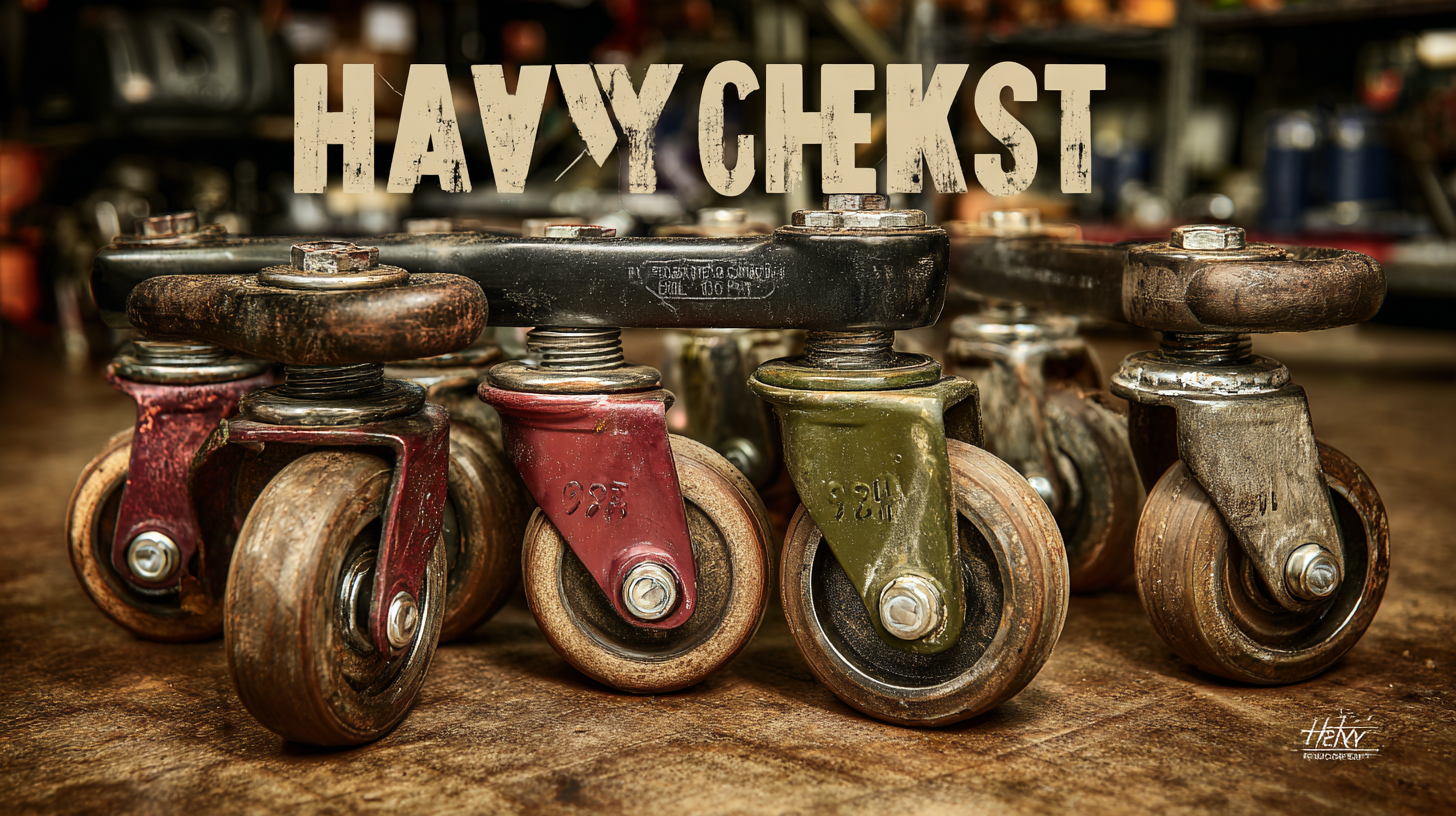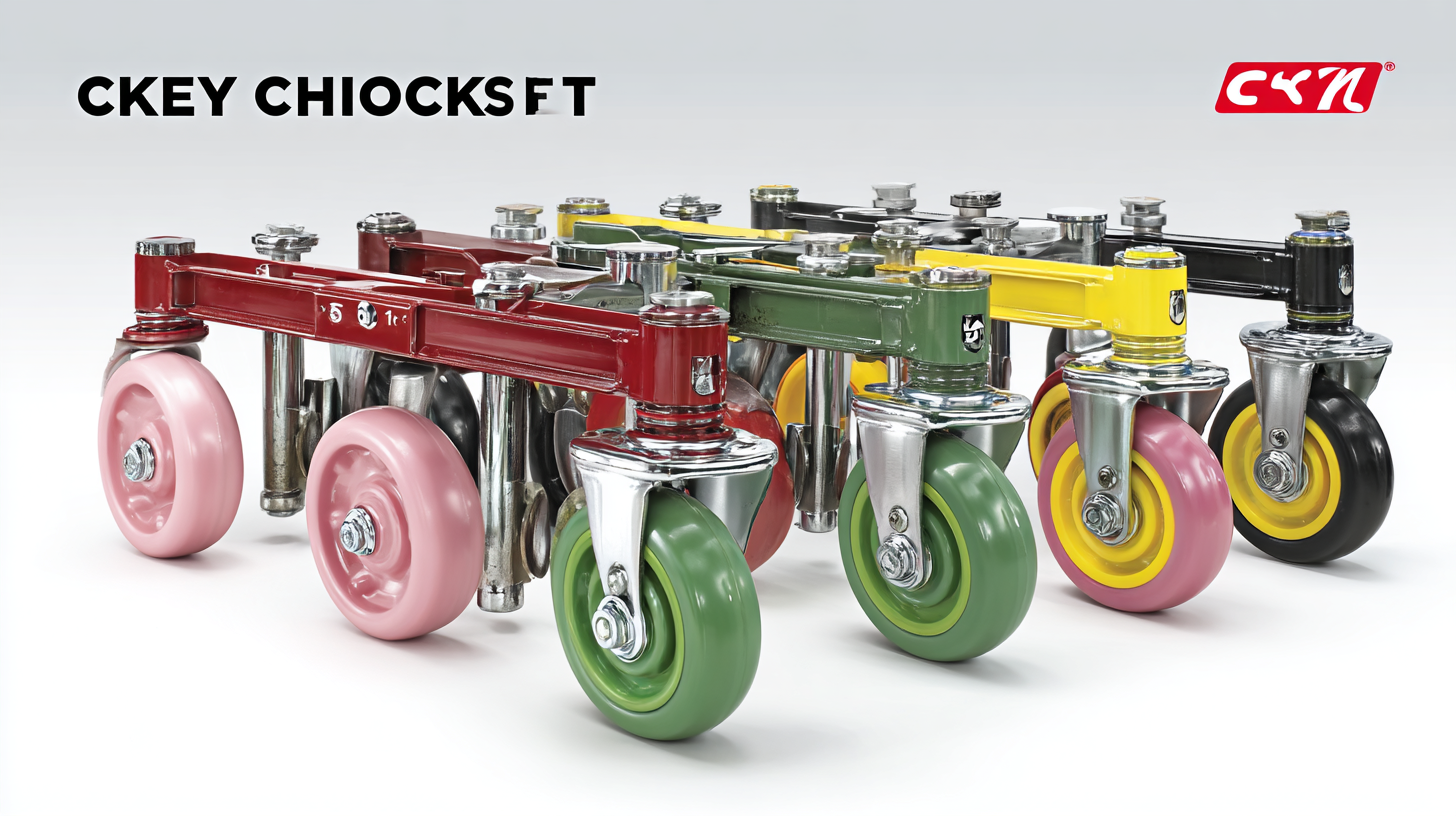The Ultimate Checklist for Choosing the Best Heavy Duty Casters for Your Business Needs
In today's fast-paced industrial landscape, the demand for reliable and efficient material handling solutions has never been greater. According to a recent report from MarketsandMarkets, the global market for heavy duty casters is projected to reach over $2.5 billion by 2025, driven by the increasing need for enhanced mobility in various sectors, including manufacturing, warehousing, and logistics. Choosing the right heavy duty casters is crucial for ensuring operational efficiency and safety, especially given the diverse applications and weight capacities they must accommodate. With the right selection, businesses can reduce downtime, minimize worker fatigue, and improve workflow. This ultimate checklist will guide you through the essential factors to consider, ensuring that you make an informed choice that meets your specific business needs.
Factors to Consider When Selecting Heavy Duty Casters for Your Industry
When selecting heavy duty casters for your business, it's essential to consider several key factors tailored to your industry’s specific needs. First, assess the weight capacity that each caster will need to support. This includes not only the weight of the objects being moved but also any additional load caused by maneuvering. Choosing casters that exceed the required capacity ensures durability and longevity, minimizing maintenance costs in the long run.
Next, consider the floor type in your working environment. Different materials, such as concrete, wood, or tile, can affect caster performance. For instance, hard rubber or polyurethane wheels are ideal for smoother surfaces, providing easy movement and reducing noise, whereas steel wheels might be better suited for rough, uneven terrains. Finally, take into account the braking system of the casters. Effective braking mechanisms are vital for ensuring safety, particularly in busy workplaces where goods are being stored or transported frequently. Tailoring your choices based on these factors will help you find the right heavy duty casters for your operational efficiency and safety.

Understanding Load Capacity and Weight Distribution for Optimal Performance
When selecting heavy-duty casters for your business needs, understanding load capacity and weight distribution is crucial for optimal performance. Load capacity refers to the maximum weight a caster can safely support, and it is essential to choose casters that can handle the loads your equipment will carry. Assessing the maximum weight of the items to be moved and the frequency of movements will help determine the appropriate load capacity. It’s recommended to select casters that can support at least 25% more than the expected load to account for dynamic forces and ensure longevity.
In addition to load capacity, weight distribution plays a vital role in ensuring stability and maneuverability. Improper weight distribution can lead to tipping, uneven wear, and increased strain on the casters, leading to premature failure. Consider the layout of your workspace and the nature of the loads being transported. For instance, distributing weight evenly across multiple casters can enhance stability, whereas concentrating too much weight on a single caster can compromise both performance and safety. By carefully evaluating both load capacity and weight distribution, you can make informed decisions that enhance operational efficiency and extend the lifespan of your heavy-duty casters.
Materials and Construction: Choosing Durable Casters for Longevity
When selecting heavy duty casters for your business, the materials and construction are paramount to ensuring longevity and reliability. Casters are subjected to significant stress and strain, especially in industrial settings where heavy loads are the norm. Choosing casters made from high-quality materials such as steel or aluminum can significantly enhance their durability. Steel casters are typically heavier and can withstand higher weights, making them ideal for heavy machinery or equipment. On the other hand, aluminum casters are lighter and resistant to corrosion, suitable for environments with exposure to moisture.
Additionally, pay attention to the construction of the casters. Welded designs often offer greater stability and strength compared to bolted ones, which may loosen over time. Inspect the wheel design as well; solid rubber wheels provide excellent shock absorption and protect floors from damage, while polyurethane wheels offer a balance of durability and low rolling resistance. Ultimately, investing in well-constructed, high-quality materials will lead to better performance and reduced downtime, making your choice of heavy duty casters a critical decision for the efficiency of your operations.
The Ultimate Checklist for Choosing the Best Heavy Duty Casters for Your Business Needs
| Material |
Weight Capacity |
Wheel Diameter |
Brake Type |
Hear Impact Absorption |
| Steel |
2000 lbs |
8 inches |
Total Lock |
Excellent |
| Polyurethane |
1200 lbs |
6 inches |
Side Lock |
Good |
| Nylon |
800 lbs |
5 inches |
No Brake |
Fair |
| Rubber |
1000 lbs |
7 inches |
Dual Lock |
Very Good |
| Aluminum |
1500 lbs |
10 inches |
Fixed Lock |
Excellent |
Wheel Types and Their Impact on Mobility in a Heavy Duty Environment
Choosing the right wheel types for heavy-duty casters is essential for ensuring optimal mobility in a challenging environment. The material and design of the wheels significantly influence performance, durability, and the ease of transportation for heavy loads. For instance, rubber wheels provide excellent shock absorption and traction, making them suitable for uneven surfaces, while polyurethane options are known for their abrasion resistance. The choice of wheel type directly impacts the caster's ability to operate efficiently and minimizes wear—both on the wheels themselves and the surfaces they traverse.

Moreover, as environmental concerns related to vehicle emissions and microplastics gain attention, the implications of tire wear and the subsequent release of particles into the environment cannot be overlooked. In heavy-duty applications, selecting casters that minimize wear and tear becomes increasingly important, aligning with broader goals of reducing greenhouse gas emissions and promoting sustainability. This awareness not only fosters safer mobility solutions but also drives innovation in the development of environmentally friendly materials and technologies that could redefine the heavy-duty mobility landscape.
Maintenance Tips for Ensuring the Longevity of Your Heavy Duty Casters
When it comes to heavy-duty casters, maintenance is key to ensuring their longevity and optimal performance. Regular inspections are essential;
check for signs of wear, such as cracks in the wheels or looseness in the mounting hardware. By addressing these issues promptly,
you can prevent more significant problems down the line, potentially saving your business time and money. Additionally, it's important to
clean the casters regularly. Dirt and debris can accumulate, leading to reduced functionality
and increased wear on the components. A simple routine of wiping them down and ensuring the swivel mechanisms are clear can go a long way.
Lubrication is another critical aspect of maintaining heavy-duty casters. Applying the appropriate lubricant
to the caster bearings will minimize friction and help avoid premature failure. It's advisable to follow the manufacturer's recommendations
regarding the type and frequency of lubrication. Furthermore, consider using
protective covers when the casters are not in use. This not only keeps them clean but also protects them from environmental factors
that could cause damage. By implementing these maintenance tips, you can ensure that your heavy-duty casters continue to operate smoothly
and effectively for years to come.